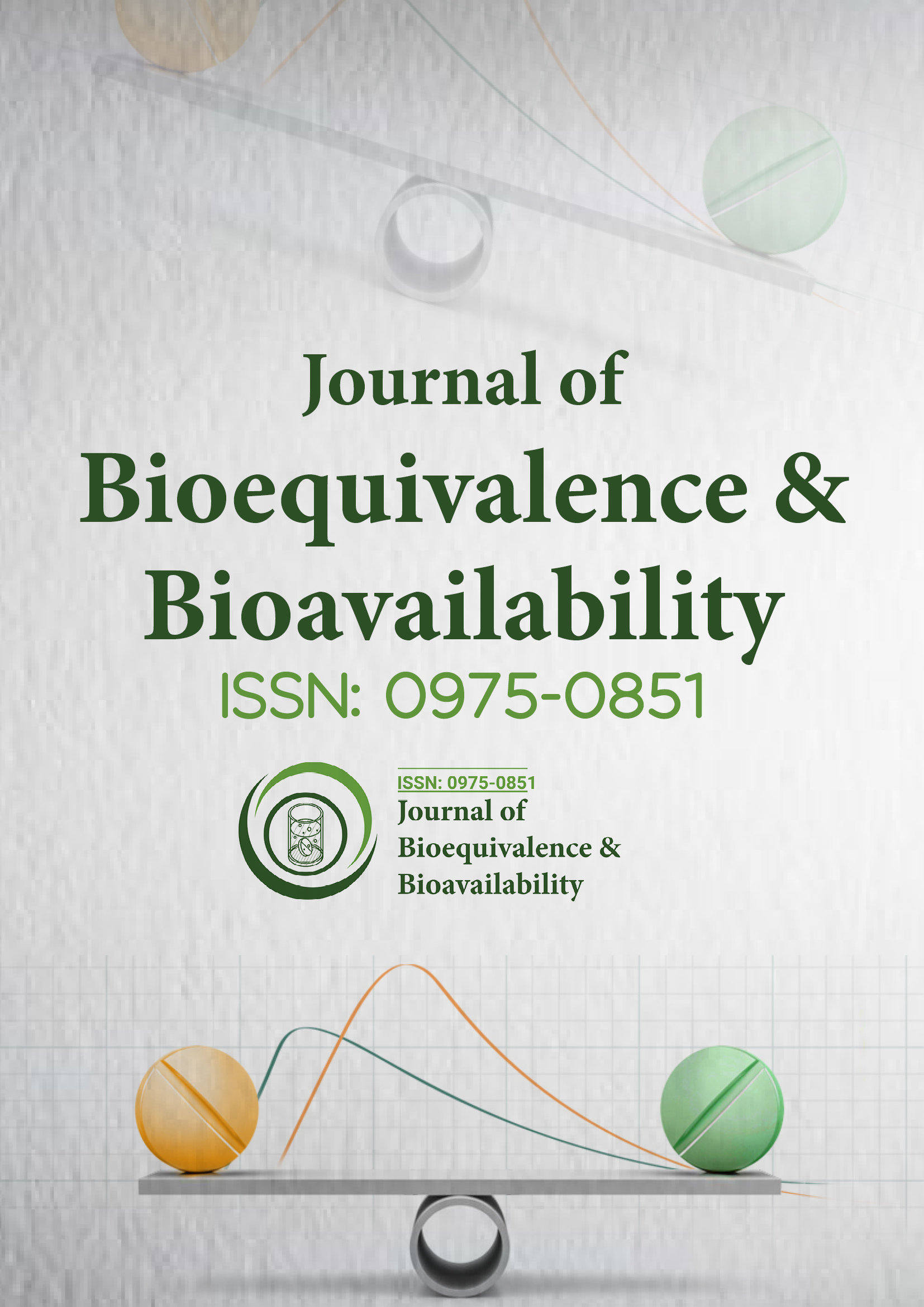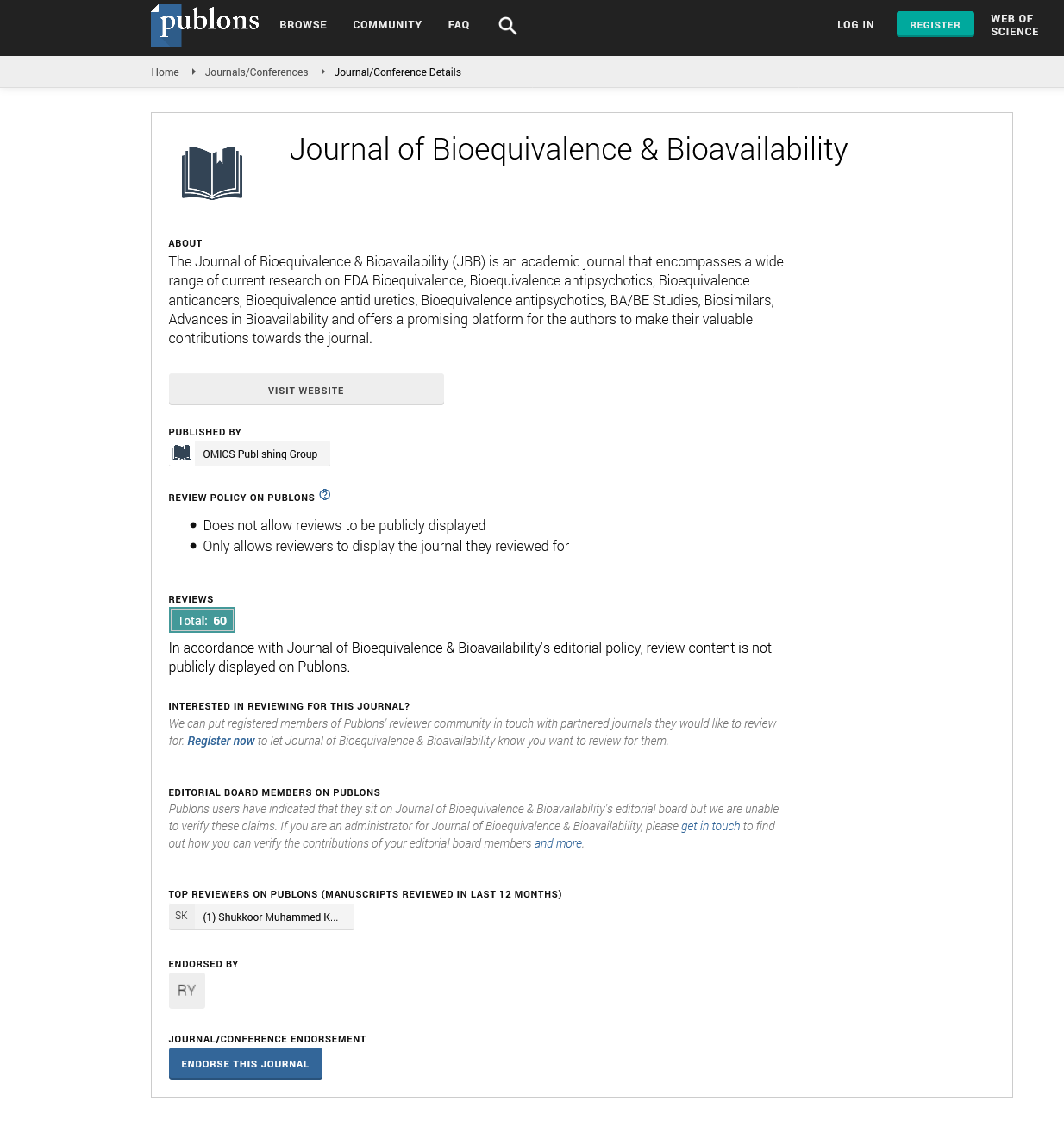Indexed In
- Academic Journals Database
- Open J Gate
- Genamics JournalSeek
- Academic Keys
- JournalTOCs
- China National Knowledge Infrastructure (CNKI)
- CiteFactor
- Scimago
- Ulrich's Periodicals Directory
- Electronic Journals Library
- RefSeek
- Hamdard University
- EBSCO A-Z
- OCLC- WorldCat
- SWB online catalog
- Virtual Library of Biology (vifabio)
- Publons
- MIAR
- University Grants Commission
- Geneva Foundation for Medical Education and Research
- Euro Pub
- Google Scholar
Useful Links
Share This Page
Journal Flyer

Open Access Journals
- Agri and Aquaculture
- Biochemistry
- Bioinformatics & Systems Biology
- Business & Management
- Chemistry
- Clinical Sciences
- Engineering
- Food & Nutrition
- General Science
- Genetics & Molecular Biology
- Immunology & Microbiology
- Medical Sciences
- Neuroscience & Psychology
- Nursing & Health Care
- Pharmaceutical Sciences
Heuristic approaches for IVIVC Level A
9th World Congress on Bioavailability and Bioequivalence
April 16-18, 2018 Dubai, UAE
Aleksander Mendyk
Jagiellonian University Medical College, Poland
ThothPro, Poland
Scientific Tracks Abstracts: J Bioequiv Availab
Abstract:
Statement of the Problem: In vitro in vivo correlation (IVIVC) is a tool designed for mapping dissolution tests results data into pharmacokinetic profile. It is an undisputed cost-savior for pharmaceutical industry and as such is still under heavy development. Currently, classical approach codified by FDA and EMA in their guidelines has several requirements, among them results from IV administration being the most difficult to fulfill. This work presents how to overcome limitations of the classical methods and get fully validated IVIVC Level A model using machine learning (ML) tools. Methodology: Several ML techniques were applied: Simulated annealing (SA), Nelder-Mead optimization (NM) and genetic programming (GP) for global and local optimization approaches. The code was written in R statistical environment scripts. Simulated data of 2-compartment model with oral administration together with simulated dissolution profiles were used for calculations. Findings: As PK data were simulated with 2-compartment model, no Wagner-Nelson method could be applied. An application of Loo-Riegelman method also failed due to the poor sampling with poor coverage of elimination and distribution phases. A hybrid approach was employed, where artificial impulse curve (IV administration) was generated based on the 2-compartment model and global optimization methods (SA&NM). This allowed switching to the convolution based approach. Next, the RIVIVR tool was applied where no assumptions about the shape and physical nature of the impulse curve is employed resulting in the moderate improvement of the results. Finally, a direct mapping of dissolution data to the PK profile was performed with genetic programming tool. This tool delivered tailored mapping function represented by empirical equation with superior predictability. Conclusion & Significance: This work presents suitable workflow for the development of IVIVC Level A model. In case of failure, classical methods could be replaced with empirical approaches delivering non-linear fully validated models suitable for pharmaceutical industry.
Biography :
Aleksander Mendyk is an expert in application of artificial and computational intelligence methods in pharmaceutical sciences, in vitro in vivo correlations development and bioequivalence assessment. With his background as a Pharmacist and with a Programmer experience he is a Software Developer and Programmer both in open source and commercial applications. He is currently employed in the Department of Pharmaceutical Technology and Biopharmaceutics, Faculty of Pharmacy, JUMC, Cracow, Poland and in the software company ThothPro™, Gdansk, Poland.
Email:mfmendyk@cyf-kr.edu.pl

